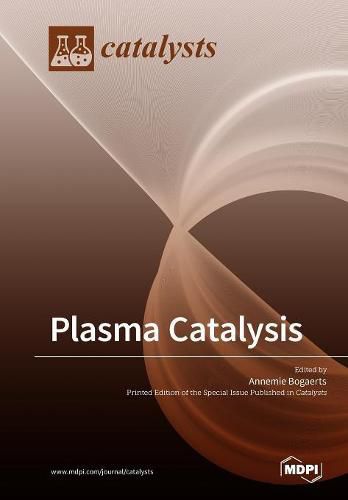Readings Newsletter
Become a Readings Member to make your shopping experience even easier.
Sign in or sign up for free!
You’re not far away from qualifying for FREE standard shipping within Australia
You’ve qualified for FREE standard shipping within Australia
The cart is loading…






This title is printed to order. This book may have been self-published. If so, we cannot guarantee the quality of the content. In the main most books will have gone through the editing process however some may not. We therefore suggest that you be aware of this before ordering this book. If in doubt check either the author or publisher’s details as we are unable to accept any returns unless they are faulty. Please contact us if you have any questions.
Plasma catalysis is gaining increasing interest for various gas conversion applications, such as CO2 conversion into value-added chemicals and fuels, N2 fixation for the synthesis of NH3 or NOx, methane conversion into higher hydrocarbons or oxygenates. It is also widely used for air pollution control (e.g., VOC remediation). Plasma catalysis allows thermodynamically difficult reactions to proceed at ambient pressure and temperature, due to activation of the gas molecules by energetic electrons created in the plasma. However, plasma is very reactive but not selective, and thus a catalyst is needed to improve the selectivity.
In spite of the growing interest in plasma catalysis, the underlying mechanisms of the (possible) synergy between plasma and catalyst are not yet fully understood. Indeed, plasma catalysis is quite complicated, as the plasma will affect the catalyst and vice versa. Moreover, due to the reactive plasma environment, the most suitable catalysts will probably be different from thermal catalysts. More research is needed to better understand the plasma-catalyst interactions, in order to further improve the applications.
$9.00 standard shipping within Australia
FREE standard shipping within Australia for orders over $100.00
Express & International shipping calculated at checkout
This title is printed to order. This book may have been self-published. If so, we cannot guarantee the quality of the content. In the main most books will have gone through the editing process however some may not. We therefore suggest that you be aware of this before ordering this book. If in doubt check either the author or publisher’s details as we are unable to accept any returns unless they are faulty. Please contact us if you have any questions.
Plasma catalysis is gaining increasing interest for various gas conversion applications, such as CO2 conversion into value-added chemicals and fuels, N2 fixation for the synthesis of NH3 or NOx, methane conversion into higher hydrocarbons or oxygenates. It is also widely used for air pollution control (e.g., VOC remediation). Plasma catalysis allows thermodynamically difficult reactions to proceed at ambient pressure and temperature, due to activation of the gas molecules by energetic electrons created in the plasma. However, plasma is very reactive but not selective, and thus a catalyst is needed to improve the selectivity.
In spite of the growing interest in plasma catalysis, the underlying mechanisms of the (possible) synergy between plasma and catalyst are not yet fully understood. Indeed, plasma catalysis is quite complicated, as the plasma will affect the catalyst and vice versa. Moreover, due to the reactive plasma environment, the most suitable catalysts will probably be different from thermal catalysts. More research is needed to better understand the plasma-catalyst interactions, in order to further improve the applications.